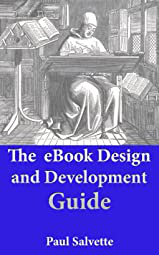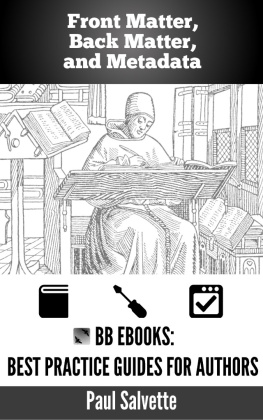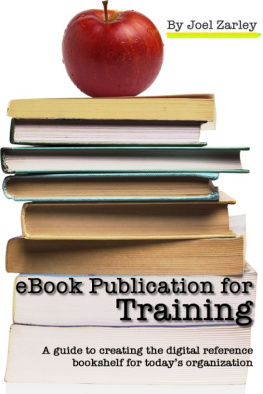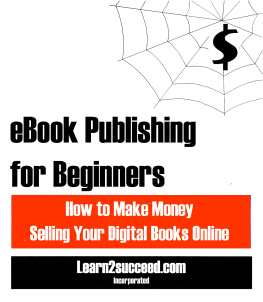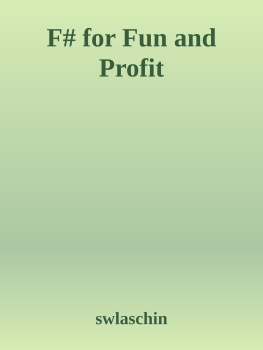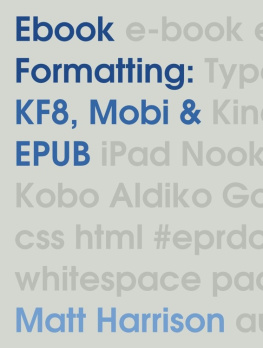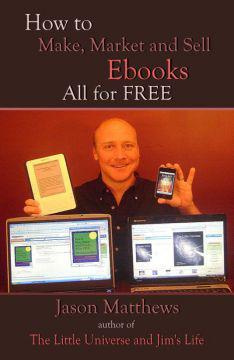This publication is under the copyright of Paul Salvette, 2012. You are welcome and encouraged to share portions of this publication under a fair use policy. You are welcome and encouraged to use, modify, and/or copy the HTML, CSS, and XML code in this publication for use in design and development projects both in the public domain and commercially. You are welcome to copy this publication to more than one device as long as those device(s) belong to you. You are not authorized to completely reproduce this publication for the purpose of selling to a third party.
Please note that this copyright notice does not account for rules and regulations that may apply per the vendors terms and conditions of this publication.
Francis began the actual illumination of the lambskin. The intricacies of the scrollwork and the excruciating delicacy of the gold-inlay work would, because of the brevity of his spare-project time, make it a labor of many years; but in a dark sea of centuries wherein nothing seemed to flow, a lifetime was only a brief eddy, even for the man who lived it.
-Walter M. Miller Jr., A Canticle for Leibowitz
This book was designed for one purpose only: to provide practical knowledge and tools for authors, publishers, and technical experts about the eBook production process. It is not a quick and dirty guide to getting some haphazard eBook up for sale at the Kindle store. This guide will provide you with all the technical knowledge and practical skills required to turn a manuscript in any format into the two major eBook formats: EPUB and MOBI/KF8.
To enhance the learning process, all HTML, CSS, and XML code snippets have been color-coded as shown below:
Technical terms that appear in the content of this book outside of a code snippet will be highlighted like this:
. Actions where you are asked to enter something on your keyboard will be highlighted as follows: press F5 to refresh the browser.
There are approximately 150 images in this book to help you in your eBook endeavors. A list of all of them appears in .
The tip boxes are intended to supplement the content with information that can help you do something faster and easier. They look like this:
Tip: These boxes provide helpful tips that can assist you in your eBook development.
The important note boxes are intended to provide information that can help avoid frustrating and catastrophic consequences. They look like this:
Important Note: These boxes present warnings and notes of caution to help you avoid problems.
All templates are available in the Appendices, and you can access them through a browser by clicking on the link in for a complimentary PDF version of this book if you have purchased the EPUB or MOBI/KF8 edition.
Thank you very much for your purchase and good luck.
Foreword
No one can dispute the rise in eBook usage around the world. This has been a tremendous boon for publishers, authors, and readers, because the written word can be downloaded onto an eReading device cheaply and quickly. The eBook revolution was only a matter of time with the dawn of the information age, and it will make all of us smarter, more educated, and better people.
Unfortunately, eBook design and development is actually in a sorry state. Much-hated Digital Rights Management schemes, poor technical documentation from the major vendors like Amazon, and a sloppy attitude toward eBook publishing have made many of the eBooks on the market look abominable. This is inexcusable, and the written word is far too important to just haphazardly convert with a magical software program into an eBook. A beautiful eBook requires professionals in the publishing business and authors to acquire technical knowledge: namely HTML, CSS, and XML. Luckily for the creative community, this technical know-how has been utilized, shared, and improved upon by web developers and designers for years.
Baldur Bjarnson issued a challenge with his article entitled The End of eBook Development in April 2012 for authors, publishers, and software developers to take the design and development of eBooks more seriously. We hope that this simple guide will help raise the standards and remove the enigma behind how eBooks are created.
Yours sincerely,
Paul Salvette
Bangkok, Thailand
September 2012
1 Introduction
Amazon Conquers All
To paraphrase the late Frank Sinatra , its Amazons world and we just live here. Love it or hate it, the Amazon Kindle store is the place to make money selling your eBook, especially if you are a self-publisher or small press. There are other vendors online that can sell your eBook: Barnes & Noble Nook, the iBookstore, and Kobo to name a few. However, no one provides that online shopping experience to a massive amount of consumers quite like Amazon. It is estimated that Amazon has approximately 70-80% of the market for eBooks . With the launch of the Kindle Fire tablet and other programs, such as Kindle Prime, Paperwhite, and Kindle Select, Amazon has further expanded their control of the eBook market and squashed competition . It has been announced by Amazon in a press release that they sell over a million Kindle Fires per week , not to mention an absurd amount of eBooks that surpasses even their print book sales .
The Rise of Indie Publishing
Once upon a time, publishing a manuscript required submitting to dozens of publishing houses and agents and getting rejection slips months later. The launch of the Kindle Direct Publishing program (KDP) has been an incredible game changer for the way people distribute and consume the written wordauthors and small presses can reach millions of customers immediately. As an example, famed self-publisher, Joe Konrath, made $100,000 selling eBooks in the first three weeks of January 2012 . Achieving even a small percentage of that success might allow you to quit your day job and retire off the royalties.
When selling your eBook on the Amazon Kindle store, you get 70% of sales if your eBook is priced $2.99 to $9.99, and 35% if priced below $2.99 or above $9.99. There are a few caveats, such as the delivery cost based on the size of your eBook and whether your eBook was sold to international customers. Nevertheless, it is much better than the 15% royalties authors receive from the traditional publishing routeif the publishing house even bothers to tell you how many sales there were. Look at this excellent report on self-publishing from Piotr Kowalczyk for 2011 to see that there is serious money involved. So, what are you waiting for? Lets get that manuscript turned into an eBook and make a few bucks.
Why eBooks are Different from Their Printed Cousins
Perhaps you think that making an eBook is as simple as running your Microsoft Word or Open Office manuscript through a software program and uploading it directly to Amazon. If you try this method, you and your customers will be incredibly disappointed with the results. An author spends hundreds of hours writing their book, an editor spends dozens of more hours fine-tuning the work, and a significant amount of time and resources are spent marketing the book. However, no attention to detail is paid to how the eBook looks to the reader in many cases.

